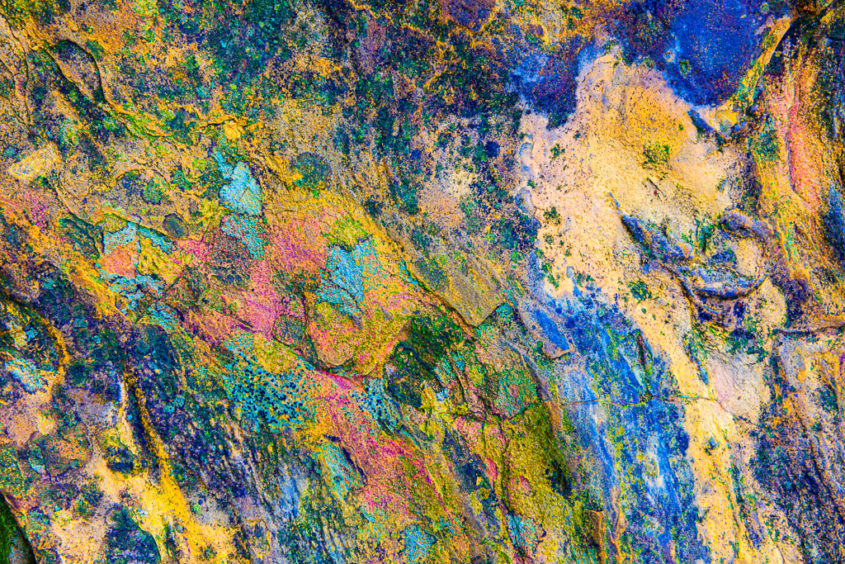
Imagine this situation, if you will. You go out to take pictures one day. You arrive at your location and begin looking for subjects to photograph. You walk around looking up, looking down, looking all around, and you can’t find anything worth shooting. Disappointed, you take a couple of quick snapshot-quality photographs before you leave. After all, you took the time to come here, so you might as well have something to show for it. Sometime later, you discover another photographer has been to that same location, maybe even stood in the exact same spot as you did, and created photographs that are truly art. You ask yourself how this could be. You begin to get somewhat discouraged and wonder if you have what it takes to create beautiful images.
If you aspire, as I do, to create amazing artistic images, this scenario is likely not an uncommon occurrence. I’ve found myself in this situation many times over the years and still do. When this occurs, I always ask myself the same question. Why? What did that other photographer have that I didn’t?
Did he have better conditions for photography? If that was it, well, there’s not much I can do about luck, now is there.
Did he have better equipment than I had? Well, then I will just solve that problem and buy that expensive new camera body, or that new 5,000mm telephoto lens, or whatever other piece of equipment I think will create the perfect image. After all, better equipment means better photographs, right?
Or, did he possess something else? Something that isn’t as random as luck but isn’t as tangible as equipment. What exactly was it that allowed him to look at a pile of junk and find such breathtaking pictures while all I see was junk?
The answer, I have come to learn, is photographic vision. The ability to see photographic subjects others do not. But, is photographic vision something that can be learned and developed? Or, is it something one is simply born with? It’s the age-old question of nature versus nurture.
In my roughly 40 years of on-again, off-again picture making, I have come to the conclusion that photographic vision can be learned, and it can be developed. It’s something I strive to improve every time I go out to take pictures. Looking at my own pictures over the last eight to ten years, I can see that my own vision has slowly evolved and continues to do so, and I am able to identify images today that I wouldn’t have even thought of much less noticed just a couple of years ago.
For example, I made the picture above one recent morning at the Old Mill in North Little Rock, Arkansas. I had arrived expecting to get photographs of the mill surrounded by beautiful autumn foliage, but the leaves failed to cooperate and change colors. I walked around taking a few shots here and there but quickly grew frustrated with the situation and considered going home.
Instead, I decided to get into a different mindset and take a different approach. Rather than focusing on the “grand” landscape, I told myself to slow down and look for small details, such as color contrasts or interesting patterns. In other words, look past the obvious. Don’t look at the pile of junk with my eyes and see junk. Look at the pile of junk with my photographic vision and see infinite possibilities.
It wasn’t until I reset my way of thinking, of opening my mind to all the possibilities in front of me, that I noticed the rocks lining a section of the path I had been walking back and forth on all morning. I had paid no attention to them earlier. They were just plain, drab rocks, after all. But now, I stopped and took a closer look. That’s when I saw patterns of very subtle color that I knew I could enhance in Lightroom and Photoshop and create a truly abstract photograph. Without my photographic vision evolving over the years, I would never have been able to recognize a great opportunity that was right in front of my eyes.
Of course, this process didn’t happen overnight, and it’s still not second nature to me. I have to constantly remind myself to use my photographic vision, not my eyes, to find those stunning compositions. I don’t always succeed. Perhaps that’s the difference between us mere photographic mortals and the greats, such as Art Wolfe, who make it all look so easy. The great photographers seem to do it as unconsciously as taking a breath. You and I have to think about it and make the effort, and that’s fine with me for now. Only through repetition will it become a habit.
My photographic vision is not as developed as I would like for it to be nor will it ever be so. Like any evolutionary process, though, it takes time. It also takes a lot of practice, which means getting out, taking a lot of pictures, and having fun. After all, photography isn’t so much about the final product but the journey you took to get there.
My settings were 70mm, 1/2 sec, f/22, 400 ISO.